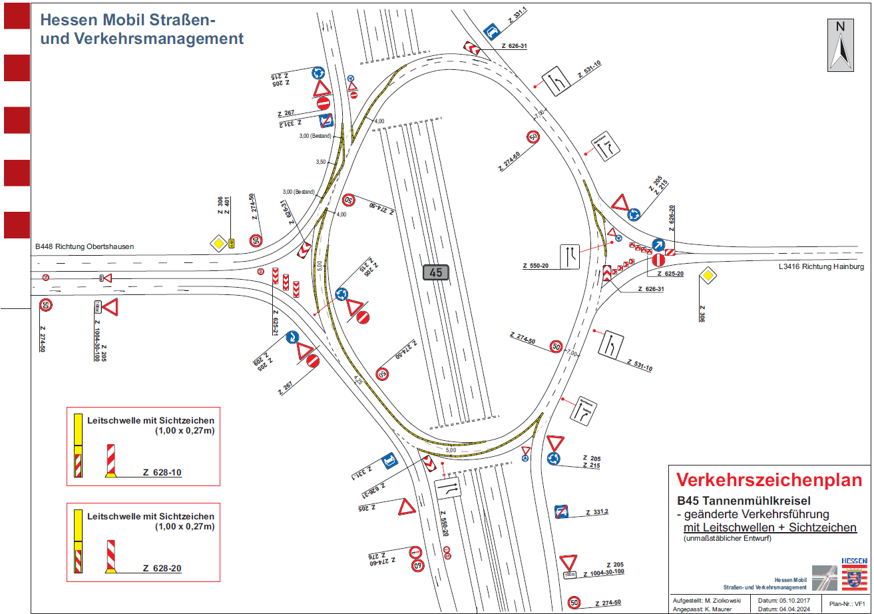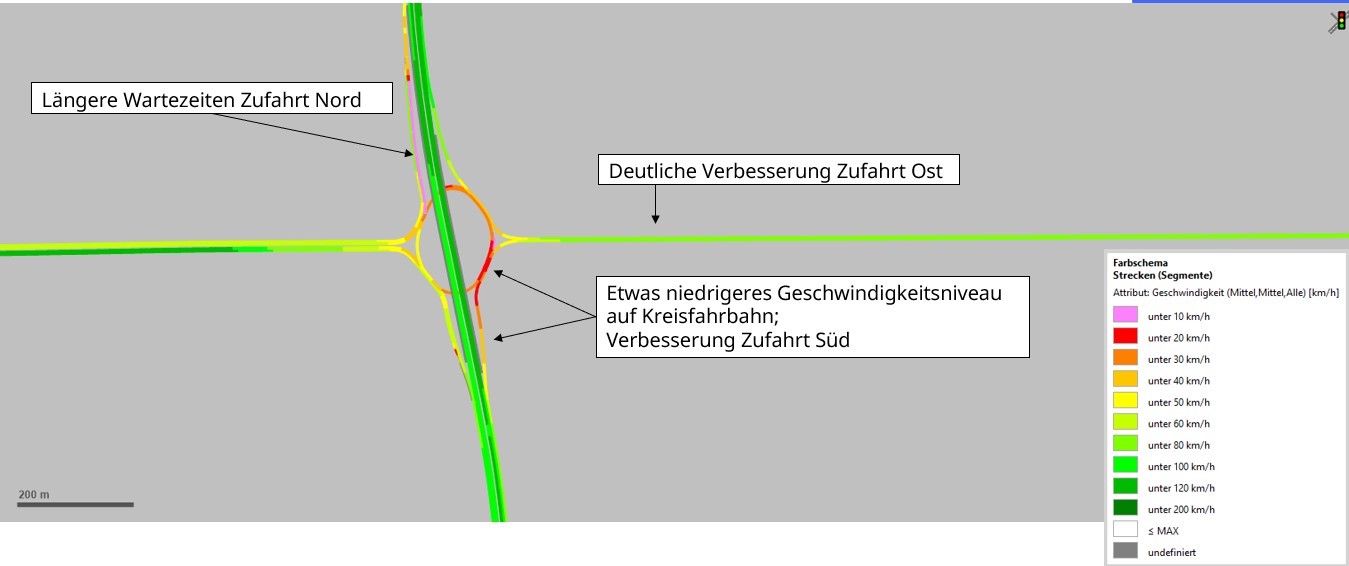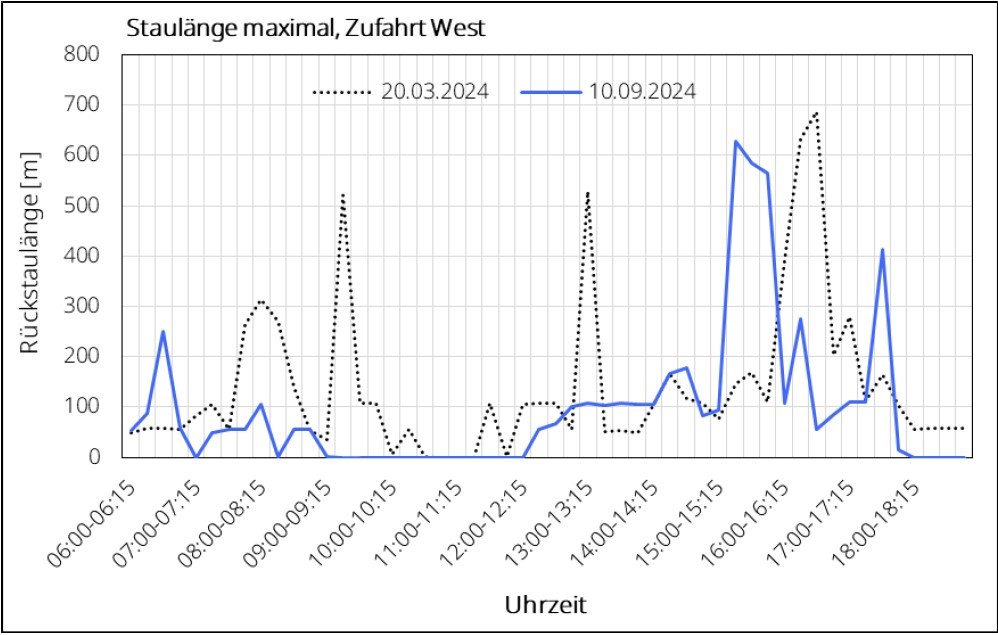Simulation of
the redesign of Tannenmühl
Initial Situation
The Tannenmühl roundabout connects the B 45 with the B 448 and L 3416 in Offenbach district. In its current configuration, it is a two-lane roundabout with bypass lanes at selected entries.
During peak hours, significant congestion occurs at certain approaches. This particularly affects the eastern approach of the L 3416 in the morning and the B 45 from the south in the evening. Consequently, waiting times are temporarily very long. In addition, there have been several accident hotspots in the area of the roundabout in the past.

Task
The goal is to improve the traffic situation by redesigning the roundabout. As part of previous studies, a redesign with guiding elements has already been developed and is planned for implementation.
Microscopic traffic flow simulations will be used to evaluate this redesign variant and further derived sub-variants in advance of implementation, focusing on their traffic impacts.
To calibrate the simulation model, traffic counts at the roundabout will be conducted. Additional counts are planned after the redesign to enable monitoring. Furthermore, TomTom data from navigation systems will be analyzed as a supplementary data source, for example, to determine queue lengths at the roundabout’s approach roads.
Approach
The following processing steps are outlined in bullet points:
Development of a traffic counting concept
Execution and evaluation of traffic counts (repeatedly)
Analysis of the current situation (queue lengths, traffic volumes, bottlenecks, etc.)
Development and calibration of a microscopic simulation model
Simulation and evaluation of the redesign variant, including presentation of average speeds, queue lengths, etc.
Development and simulation-based testing of additional redesign variants to optimize traffic conditions

Results
As a result, the advantages and disadvantages of the redesign variants could be evaluated based on traffic indicators. The preferred variant was implemented and subsequently fine-tuned operationally as part of the monitoring. Overall, the redesign led to an improvement in traffic flow.
